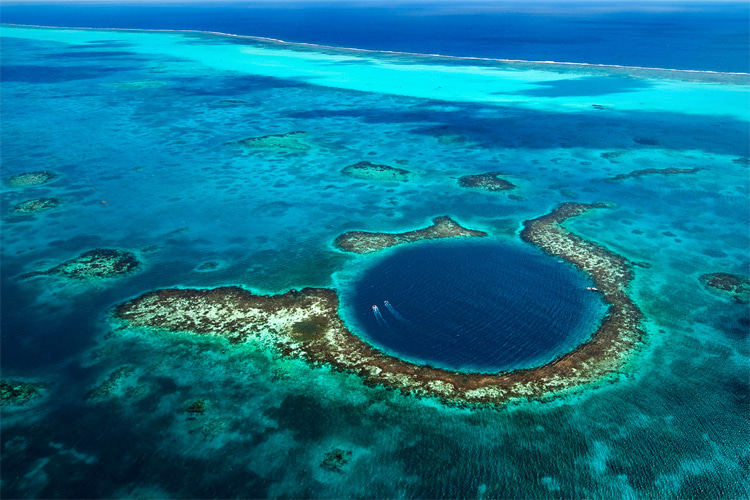Nature never seizes to surprise us. The Great Blue Hole in the Caribbean Sea is an unforgettable, once-in-a-lifetime experience for the human senses.
It's the home of the planet's multiple shades of blue and a diver's paradise.
The Great Blue Hole is a large, circular underwater sinkhole located near the center of the Lighthouse Reef atoll, approximately 43 miles (70 kilometers) from the mainland of Belize in Central America.
The natural abyss is circular and measures about 1,043 feet (318 meters) in diameter and around 407 feet (124 meters) deep.
It has a surface area of 760,500 square feet (70,650 square meters) and is one of the largest natural formations of its kind.
The Great Blue Hole is part of the Belize Barrier Reef Reserve System, a UNESCO World Heritage Site.
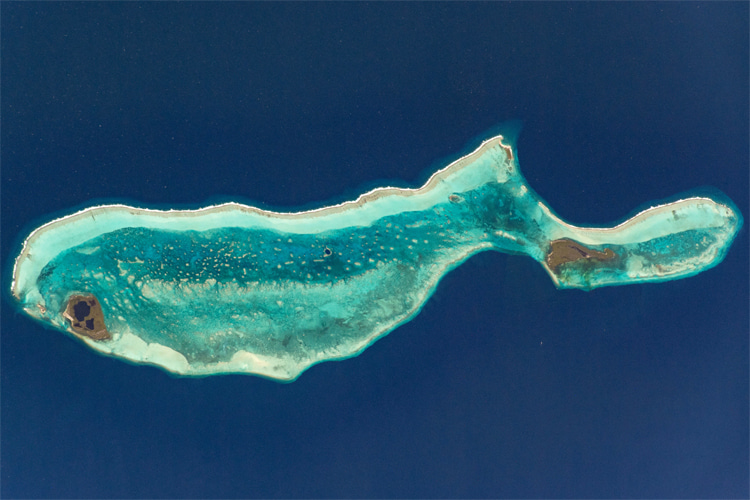
The Formation of the Great Blue Hole
The collapsed underwater cave system formed during at least four phases of quaternary glaciation when sea levels were much lower, between 153,000 and 15,000 years ago.
The process went through different stages:
- Bedrock Erosion: On land, water gradually ate away at an area of soft bedrock, dissolving soft minerals and rocks, such as gypsum and limestone, or other carbonate rocks;
- Cavern Formation: The erosion eventually left a void - a subterranean cavern;
- Cavern Collapse: With no supporting bedrock below, the cavern roof collapsed, and the overlying soil slipped into the void;
- Sinkhole Flooding: As sea level rose over thousands of years, the sinkhole flooded;
Belize's famous Blue Hole is not a perfect cylinder, though. The marine sinkhole left ledges at the following depths:
- 69 feet (21 meters);
- 161 ft (49 meters);
- 299 feet (91 meters);
The walls showcase a mix of flowstone, tuna algae, limestone, stalactite, coral, and other sediments.
Divers exploring the depths of the Great Blue Hole have discovered stalactite formations, indicating that the sinkhole was once an above-ground cave system before it collapsed.
Certain stalactites display a slight deviation of 5 degrees, suggesting a geological movement and tilting of the underlying plateau.
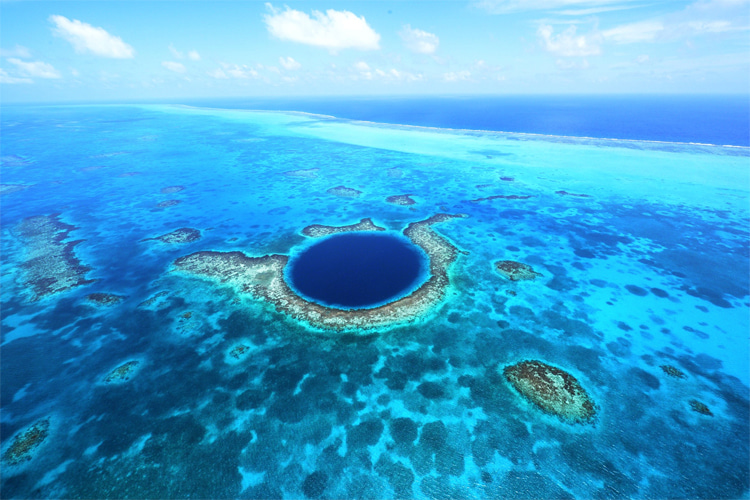
A World-Renowned Diving Destination
The Great Blue Hole gained international fame when Jacques Cousteau declared it one of the world's top ten scuba diving sites.
The renowned French oceanographer featured the natural wonder in the episode "Secrets of the Sunken Caves" of his television series, "The Undersea World of Jacques Cousteau."
Curiously, the sinkhole's name was coined by British diver and author Ned Middleton, who wanted it to "compete" in importance and popularity with the famed Australian Great Barrier Reef.
The site's deep blue color contrasts sharply with the turquoise waters of the surrounding reef, creating a visually stunning sight.
The area is also rich in marine life, and swimmers can encounter various fish species, including Caribbean reef sharks and bull sharks.
The Great Blue Hole has become a world-renowned diving destination.
Divers are attracted by the depth and unique geological formations and the chance to witness marine life in its natural habitat.
The bottom of the Great Blue Hole is not a typical ocean floor but a layer of fine silt, making it challenging for divers to explore without stirring up the sediment.
While not directly related, it's interesting to note that the Great Blue Hole shares similarities with Dean's Blue Hole in the Bahamas, the world's deepest known underwater sinkhole.
The 2018 Descent
In December 2018, two submarines entered the Blue Hole to create a detailed map using special sonar scanning technology.
The team almost finished making a 3D map of the hole.
During their exploration, they found a layer of hydrogen sulfide around 300 feet (91.4 meters) deep in the water.
The toxic colorless gas prevents oxygen from getting deeper, and consequently, below this depth, the water becomes very dark, lacks oxygen, and doesn't support life.
The submarines also made a sad discovery - they found the bodies of two divers at the bottom of the Great Blue Hole.
They were part of a team of three thought to have gone missing while diving there.
The team told the Belizean authorities about it. However, as a sign of respect, the crew decided not to bring the bodies back to land.
The Aquatica Submarines team, funded by Virgin founder Richard Branson, also found a lost GoPro camera with holiday photos and a two-liter Coca-Cola bottle.
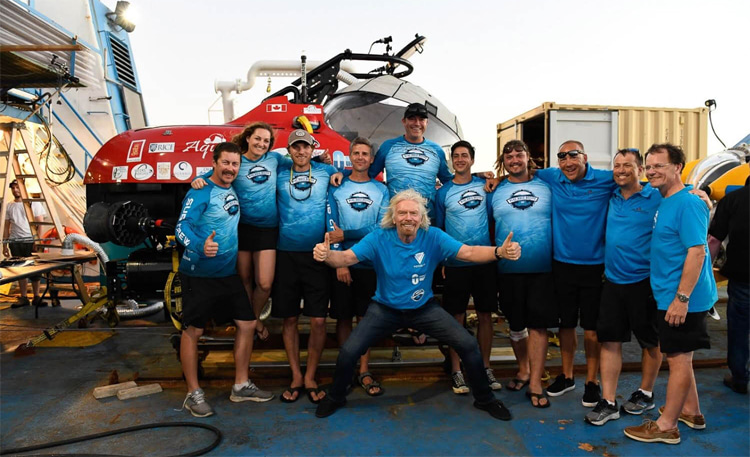
Rich Marine Life
The water at the Great Blue Hole is often very clear, which makes it a great place to dive.
People can see different types of fish, such as midnight parrotfish, Caribbean reef corals, sea turtles, mollusks, sponges, and young fish.
Several shark species, such as blacknose sharks, bull sharks, and hammerheads, have been seen there, but not always.
The uniqueness of this natural sanctuary results in stunning Great Blue Hole photos and videos.
Local scuba diving packages range from $200 to $600. Each Great Blue Hole dive takes around 25 minutes.
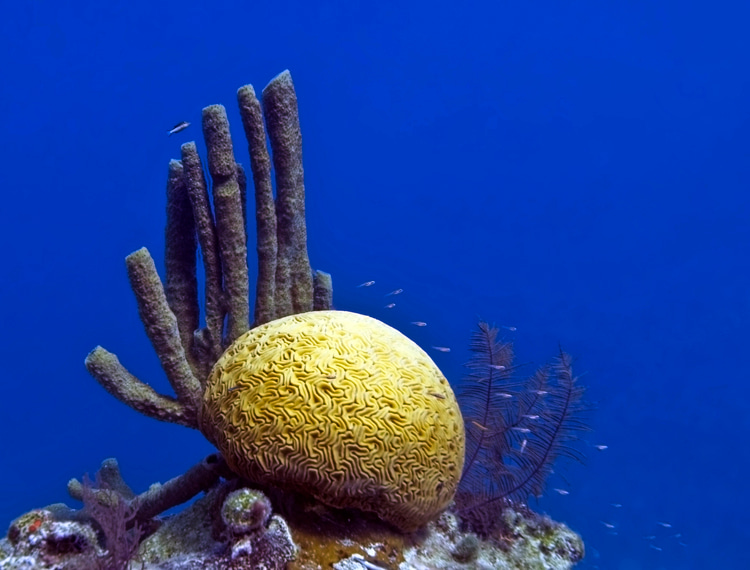
When to Go
The optimal time to dive in Belize, especially the Great Blue Hole, is during April, May, and June.
These months offer the best diving conditions with peak visibility, fewer crowds, and the chance to encounter whale sharks.
Although visibility remains good from June to November, this period coincides with the rainy season, potentially resulting in choppy waters.
From December to April, the dry season boasts fantastic weather, but it's essential to note that this timeframe is also the peak tourist season.
Consequently, prices tend to rise, and there's an increase in the number of visitors.
Despite this, diving is generally enjoyable throughout the year, and each season presents its own unique advantages for those exploring the underwater wonders of Belize.
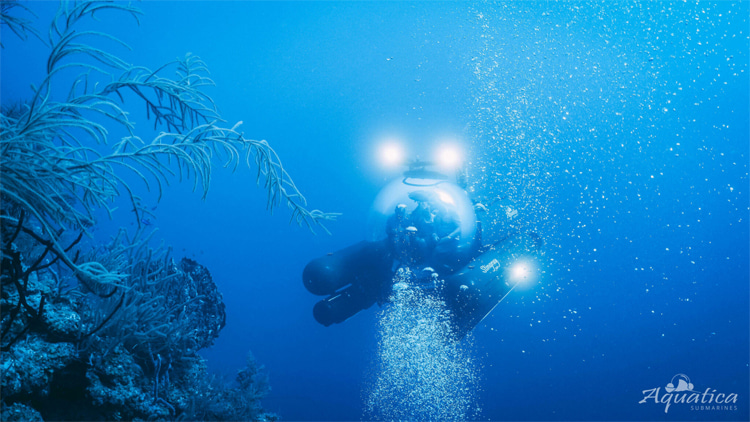
How to Get There
To reach the Great Blue Hole, most visitors use boats or helicopters departing from various barrier islands in Belize.
Opting for a boat journey typically takes three to four hours, depending on whether you're approaching from the north or south.
You should start from the northern part of Belize for easier access.
For a more budget-friendly option, you can join a shared tour with a local operator.
If you prefer a more private experience, charter a boat exclusively for your group or arrange a multi-night catamaran adventure.
Another way to witness the Great Blue Hole is through helicopter tours, ideal for non-divers looking to avoid the lengthy boat journey.
They provide a fast and picturesque overview of the marine sinkhole from the sky, and they are particularly suitable for those who just want to see it as a bucket-list item and capture stunning aerial photographs.
